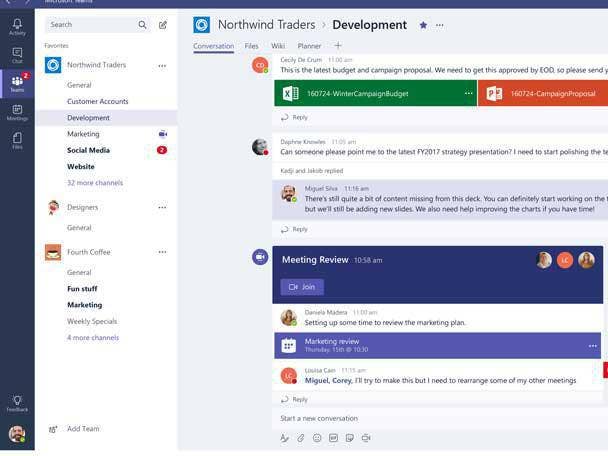Microsoft Hikes Office 365 Pricing In First Major Increase In Decade
On March 1, M365 Business Basic increases by $1, from $5 to $6 per user per month, according to the company. M365 Business Premium increases by $2, from $20 to $22. Office 365 (O365) E1 increases $2, from $8 to $10. O365 E3 increases by $3, from $20 to $23. O365 E5 increases $3, from $35 to $38. And M365 E3 increases $4m from $32 to $36.

Microsoft announced “the first substantive pricing update” of Microsoft 365 and Office 365 since the debut of the cloud-based productivity and collaboration applications in 2011. The increase, slated for March 1, comes after 10 years of added capabilities in areas including communication, security, compliance and automation.
“This updated pricing reflects the increased value we have delivered to our customers over the past 10 years,” Jared Spataro, the tech giant’s corporate vice president for Microsoft 365 (M365), wrote in a blog post Thursday announcing the news.
On March 1, M365 Business Basic increases by $1, from $5 to $6 per user per month, according to the company. M365 Business Premium increases by $2, from $20 to $22. Office 365 (O365) E1 increases $2, from $8 to $10. O365 E3 increases by $3, from $20 to $23. O365 E5 increases $3, from $35 to $38. And M365 E3 increases $4 from $32 to $36.
[RELATED: Microsoft Buys Privileged Access Startup CloudKnox Security]
Microsoft declined further comment regarding the price increases.
In 10 years, the 365 product has grown to 300 million commercial paid seats, according to the company. Microsoft introduced O365 in 2011 and introduced M365 in 2017, bringing together Office, Windows, enterprise mobility and security. The tech giant also launched the popular Teams collaboration application the same year.
Over 10 years, Microsoft has introduced security capabilities for the product suite including data loss prevention (DLP) capabilities for email and documents, sensitivity labels and message encryption. Microsoft has introduced compliance capabilities such as Content Search, eDiscovery and core Litigation Hold.
Ten years in, however, the product suite continues to have technical issues and outages, from Teams sending calls straight into some users’ voicemails in June to an issue preventing some North American users from joining meetings in February.
In July, Microsoft announced during its quarterly earnings call that fourth-quarter sales in Microsoft’s productivity and business processes segment — which includes Office 365 Commercial sales — totaled $14.7 billion, up 25 percent year over year from $11.8 billion.
Within this segment, Office Commercial products and cloud services sales increased 20 percent, driven by Office 365 Commercial sales of 25 percent. Office Commercial products sales fell 8 percent due to customers shifting to cloud offerings, Microsoft said.
In the current quarter, “revenue growth will again be driven by Office 365 with healthy seat growth across segments, and continued momentum and E5,” Microsoft CFO Amy Hood said during the call. “In our on-premises business, we expect revenue decline approximately 20 percent consistent with the ongoing customer shift to the cloud.”
The price increase comes amid an acquisition spree by Microsoft. In June, the tech giant purchased ReFirm Labs to enhance the software giant’s firmware analysis and security capabilities from servers to IoT.
One month later, Microsoft announced a deal to acquire attack surface management firm RiskIQ to bolster the tech giant’s capabilities around providing security across both cloud and on-premises environments. It also announced plans to acquire Suplari, a company that offers data analysis software for companies to manage supplier spending and purchased CloudKnox Security to give organizations visibility into privileged access, right-size permissions and consistently enforce least-privilege principles with the aim of reducing risk.
Separate from the price increases, the company also announced Thursday unlimited dial-in capabilities for Teams meetings across enterprise, business, frontline and government suites “over the next few months” in recognition of the growing need for cloud connectivity even in areas with “bad internet connection.” Dial-in is already included with M365 E5 and O365 E5.